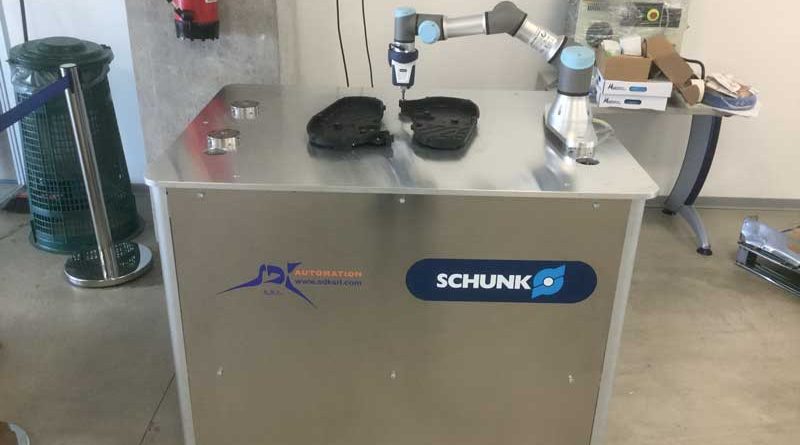Clamping Modules Make Robots Even More Flexible
Modern assembly machines need to be designed so to be flexible and make changeover easy in quite a short time. During the next BI-MU, thanks to the high adaptability of its VERO-S module, SCHUNK will present an application that uses the clamping system to place a 3 kg payload cobot in more work areas, with a significantly reduced changeover time.
We managed to see the preview of the demo.
by Sebastiano Mainarda
The keyword is flexibility, in this case more than ever. Indeed a primary need in the assembly sector, characterized – differently from the past, when the machines had to be able to realize millions of units of the same product – by the presence of increasingly smaller batches. As a consequence, modern assembly machines should be designed so to be flexible and capable of processing products with different characteristics over time. Precisely for this reason, during the next BI-MU, scheduled for October in Milan, SCHUNK will present a highly innovative demo based on an “alternative” – but with great potential – use of the VERO-S clamping system.
Moving the robot from a work area to another in only a few seconds
The demo, created in collaboration with the Piedmont-based company S.D.K., consists of a workbench with a 3 kg payload cobot equipped with a SCHUNK gripping system. The innovation lies in the possibility of using the VERO-S clamping module to move the robot from one work area to another in a very short time. “Robots are typically integrated into assembly machines, consisting of a fixed platform”, says Calogero Sciandra from SCHUNK, promoter of the initiative. “With the idea of introducing a highly flexible system, we imagined such an application, which perfectly suits to small robots, which can therefore be moved easily from one station to another within the same line or even in different assembly lines. Changeover time is quite close to zero: just a few seconds needed to unhook the robot, move it to the new station and then hang it up on the clamping module”.
Some alternative applications of the clamping module
SCHUNK’s VERO-S module is designed for quick changeover requirements in machine tools. The increased dimensional stability for the module body has a positive impact on the rigidity of the clamping, which is done via spring force without any external energy supply; it is form-fit and self-locking. Furthermore, for maximum process reliability, both clamping slide positions – “open” and “closed” – can be queried as standard using dynamic pressure.
“The VERO-S module, originally designed for machine tools, can also be used in other production contexts”, continues Mr Sciandra. “For example, being made entirely of stainless steel, it has been used for a quick gripper change on some machines in the food sector. Other applications are closely related to assembly, whether it is about fastening the bodies in the automotive field or about pallet changeover on assembly lines”.

